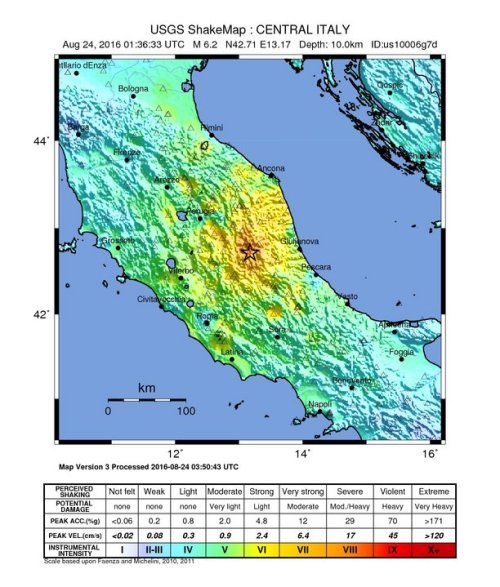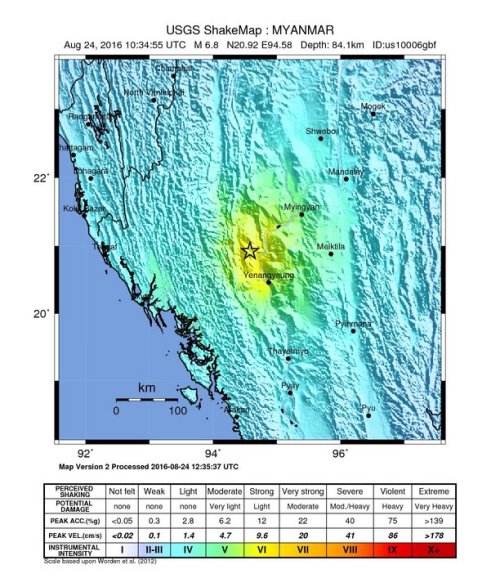Magnitude vs IntensityEarlier this week, a disastrous earthquake struck Italy, with hundreds of peop
Magnitude vs IntensityEarlier this week, a disastrous earthquake struck Italy, with hundreds of people killed and nearby cities left in rubble. A few hours later, another quake struck a completely different plate boundary in a completely different part of the world, hitting in western Myanmar and killing 3 people.These two quakes were very different, but they tell an impressive story of how earthquakes work. Although the Italian quake killed far more people, it released far less energy.Geologists measure the energy released in an earthquake using a scale called the moment magnitude scale – the amount of shaking received by seismographs is turned into a single number on a scale of 1-10. The moment magnitude scale is an updated version of the Richter scale, which was developed in California and was found to poorly quantify earthquake size when used in different plate tectonic settings.The Moment Magnitude quantifies how much energy is released when a fault breaks. In general, the bigger the fault that breaks, the more energy is released. The quake in Italy was measured at a moment magnitude of 6.2, while the quake in Myanmar had a moment magnitude of 6.8. These numbers are logarithmic, meaning that the Myanmar quake released over 6x the energy of the Italian quake, but the Italian quake was far more destructive even though plenty of people live in cities in that part of Myanmar.The difference in devastation occurred because of different geologic settings for the two faults. The actual shaking at the surface is a function of the energy released by the quake, the distance between the quake hypocenter (the actual spot on the fault that ruptures) and the surface of the earth (the epicenter is the point on the Earth’s surface directly above the hypocenter) and the local geology.In this case, the most important difference between the two quakes was the depth. The hypocenter of the Italian quake was only 10 kilometers beneath the Earth’s surface, while the hypocenter of the Myanmar quake was 85 kilometers deep. Even though the Myanmar quake released 6x as much energy, it was 8.5x deeper and therefore nowhere on the surface received nearly the jolt that Italy received.Geologists have a different scale calibrated that actually expresses how much the surface shakes. This scale is called the Mercalli magnitude scale and it is shown by the color contours on this map. Rather than giving decimal points, that scale just has round numbers expressing what people feel. At its strongest, the Italian quake reached VII-VIII (7-8) on this scale, while the Myanmar quake only reached a VI.These USGS shakemaps always display Mercalli scale measurements based on the ground shaking that people actually endure on the planet’s surface. That extra ground acceleration in Italy was the difference between a rolling shake and cities being leveled.-JBBImage credits: USGShttp://on.doi.gov/2bER156http://on.doi.gov/2bhThjn -- source link
Tumblr Blog : the-earth-story.com
#science#earthquake#geology#fault#italy#myanmar#burma#magnitude#mercalli#richter#moment magnitude#ground motion#acceleration#geohazard#seismic

